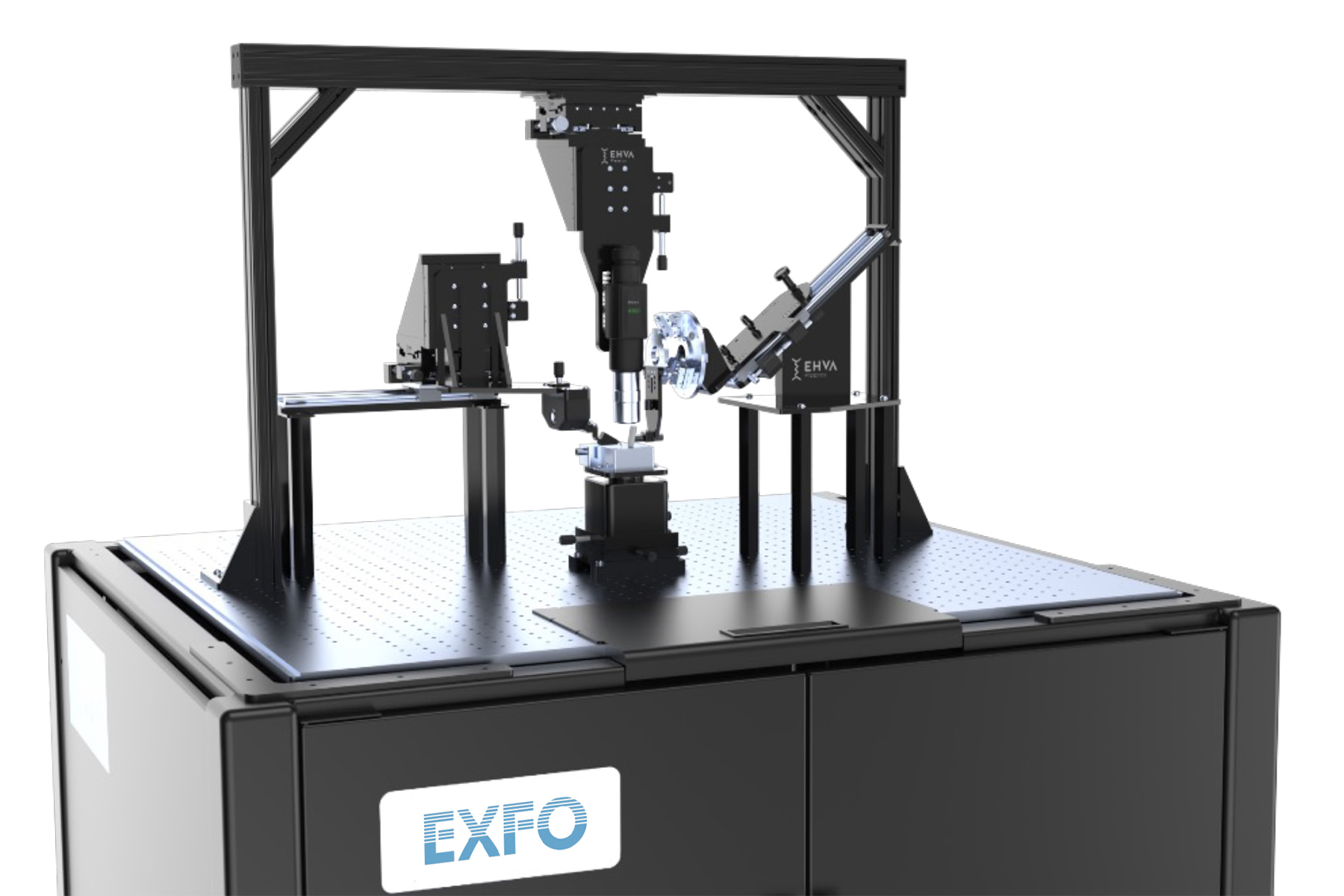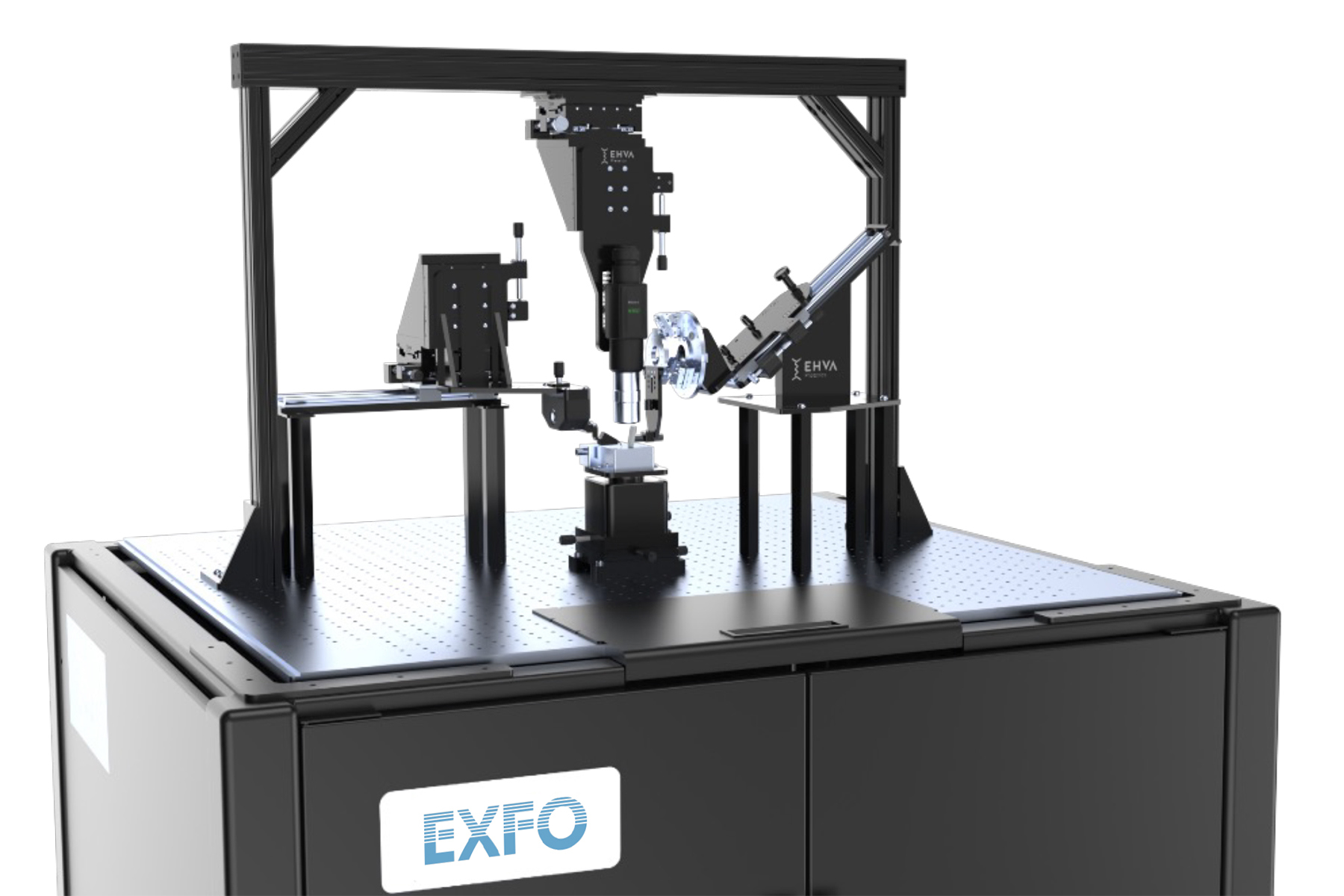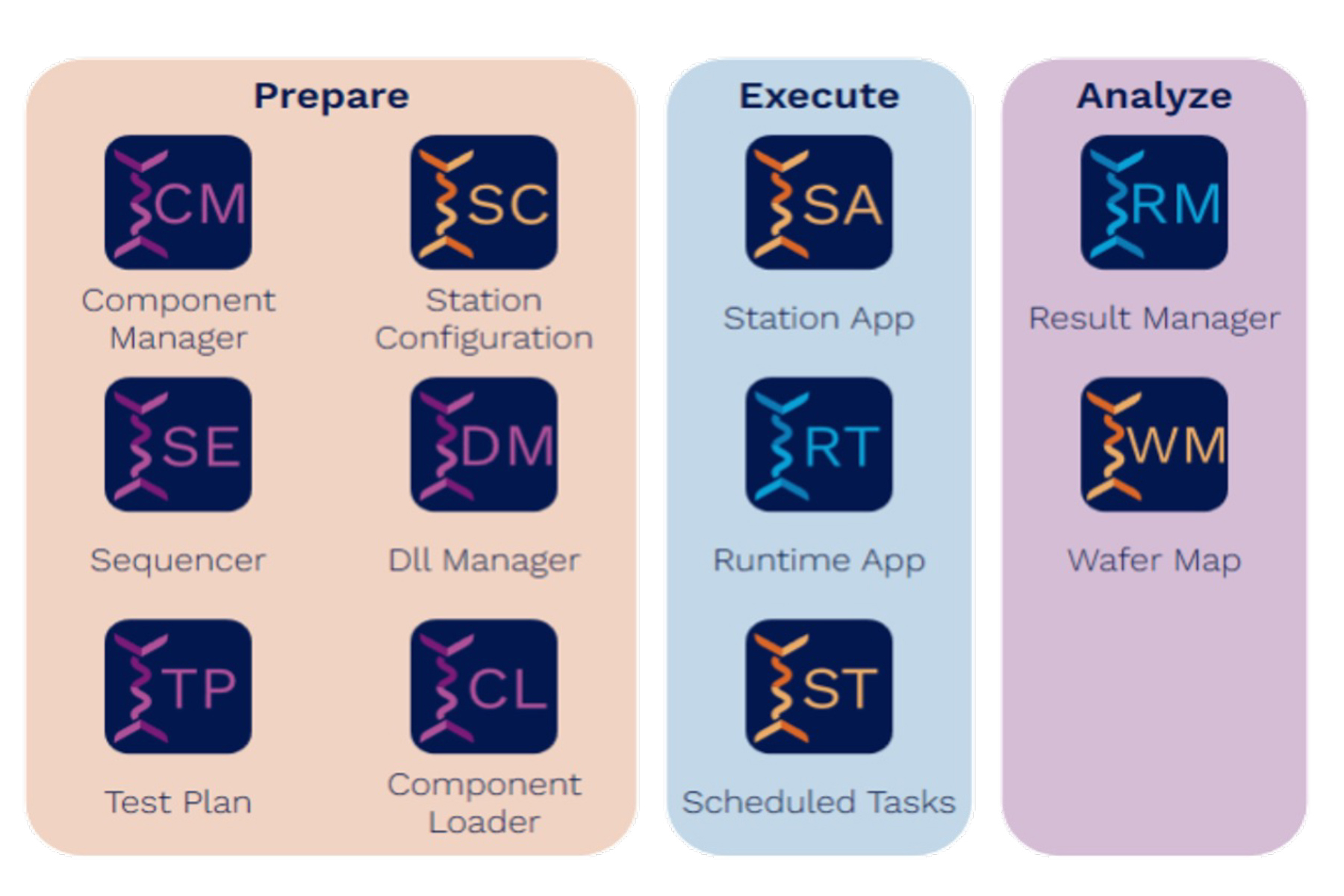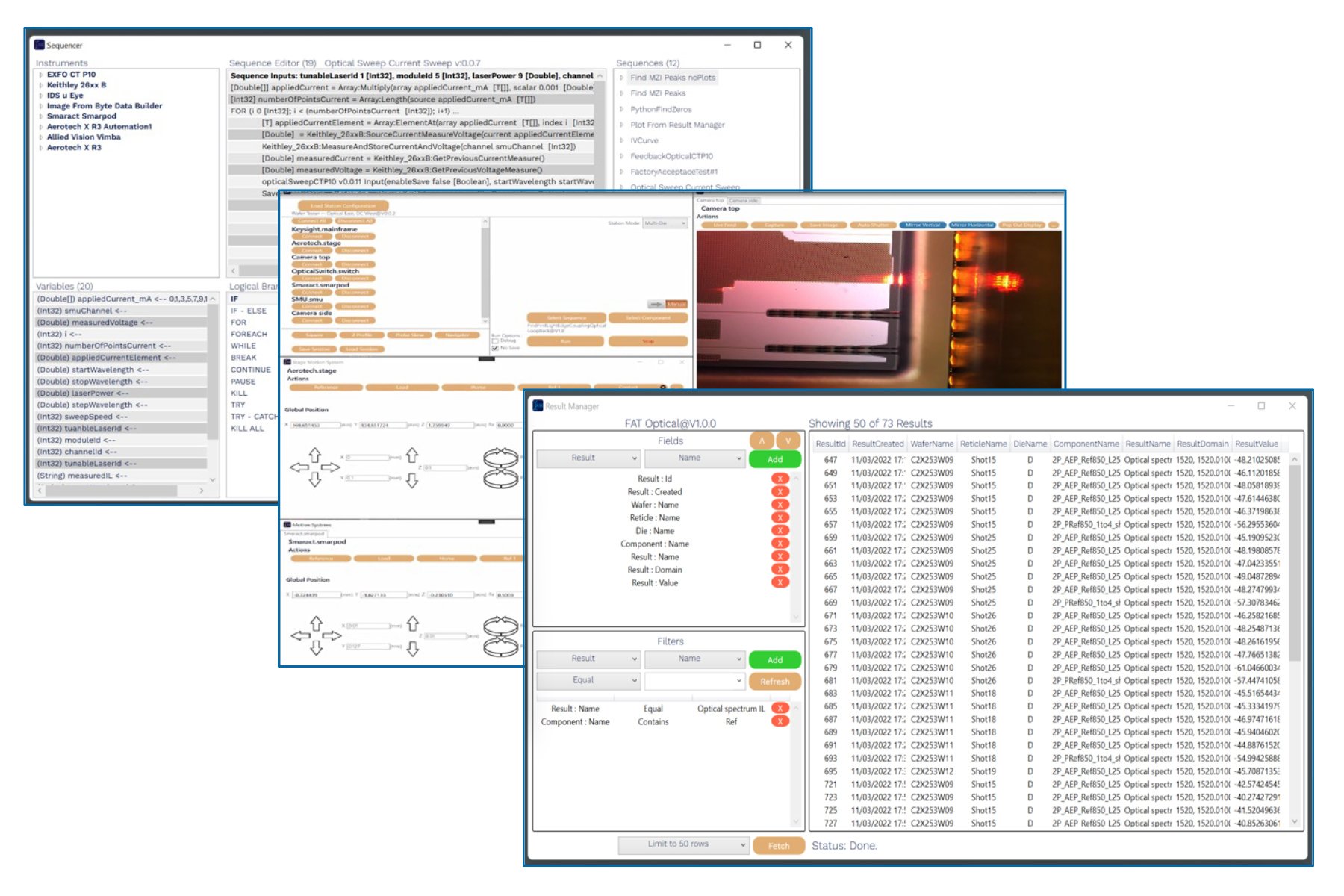EXFO Pilot AUTOMATION SOFTWARE
EXFO Pilot is a software platform that orchestrate the complete flow of PIC test and measurement: (i) test preparation, (ii) execution of fully automated navigation, alignment and measurements at a high throughput and (iii) analysis and data management of the results.
It transforms the OPAL-SD single die station into an automated testing station and a source of quality measurements that can be processed into actionable data. The complete suite of applications supports the full test-and-measurement flow and helps users to become more data-driven.
Powerful and scalable
From software architecture to implementation, EXFO Pilot is designed for scalability in time and volume and helps implement best practices. It streamlines automation of tasks (preparation, data analysis, reporting) and measurements (navigation, alignment, instrument control) to increase effectiveness. The software is composed of multiple applications, each designed for its specific task, with de-coupled concepts and responsibilities.
Database benefits
Underlying all applications, the software is linked to a database (cloud-based or on-premises), that acts as a data repository for all of the elements (results and experimental conditions, station configuration, test definition, component definition, drivers, python scripts). EXFO Pilot enables multi-users, multi-site collaboration with a shared common workspace of the data. The database is relational, traceable and scalable to high volume, making the system natively compatible and designed to support advanced data analysis, artificial intelligence and business intelligence tools through built-in tools or by interoperability.









